#UNESCO world heritage list
Explore tagged Tumblr posts
Text










Triumphal Arch of Orange, France (No. 2)
The Triumphal Arch of Orange (French: Arc de triomphe d'Orange) is a triumphal arch located in the town of Orange, southeast France. There is debate about when the arch was built, but current research that accepts the inscription as evidence favours a date during the reign of emperor Augustus (27 BC–AD 14). It was built on the former via Agrippa to honor the veterans of the Gallic Wars and Legio II Augusta. It was later reconstructed by emperor Tiberius to celebrate the victories of Germanicus over the German tribes in Rhineland. The arch contains an inscription dedicated to emperor Tiberius in AD 27. Along with the Roman Theatre of Orange, the Triumphal Arch was inscribed on the UNESCO World Heritage List in 1981 because of its exceptional preservation.
Source: Wikipedia
#Orange#Provence-Alpes-Côte d'Azur#Vaucluse#Carpentras#travel#original photography#vacation#tourist attraction#landmark#cityscape#architecture#summer 2021#France#Europe#Triumphal Arch of Orange#Arc de triomphe d'Orange#UNESCO World Heritage List#French history#Roman history#tree#Southeastern France
25 notes
·
View notes
Photo

Title
Light and shadow in the dunes of the desert of Lut
Eastern Iran’s Dasht-e Lut has been on the UNESCO World Heritage List since 2016, due to its unique landscape and geological characteristics.
Photographer: Bernd G. Schmitz - Germany
Neutral Density Photography Awards
#bernd g schmitz#photographer#germany#neutral density photography awards#aerial photography#landscape#sand dunes#iran#dasht-e lut#desert#unesco world heritage list#nature
88 notes
·
View notes
Text
instagram
Quedlinburg's architectural heritage has been on the UNESCO World Heritage List since 1994, making the town one of the largest area monuments in Germany.
Some Glimpses from Germany for your Weekend :)
#Quedlinburg#Harz#Harz Mountains#Deutschland#Germany#UNESCO World Heritage List#UNESCO Welt Kultur Erbe#Instagram
3 notes
·
View notes
Text

These vintage photos capture everyday life in Amsterdam during the 1930s.
Amsterdam was founded at the mouth of the Amstel River that was dammed to control flooding; the city’s name derives from the Amstel dam.
Originally a small fishing village in the late 12th century, Amsterdam became a major world port during the Dutch Golden Age of the 17th century, when the Netherlands was an economic powerhouse.
Amsterdam was the leading center for finance and trade, as well as a hub of production of secular art.
In the 19th and 20th centuries, the city expanded and many new neighborhoods and suburbs were planned and built.
The canals of Amsterdam and the 19th-20th century Defence Line of Amsterdam are both on the UNESCO World Heritage List.
Sloten, annexed in 1921 by the municipality of Amsterdam, is the oldest part of the city, dating to the 9th century.
The city has a long tradition of openness, liberalism, and tolerance.
Cycling is key to the city’s modern character, and there are numerous biking paths and lanes spread throughout the entire city.

Shortly before the First World War, the city started to expand again and new suburbs were built.
Even though the Netherlands remained neutral in this war, Amsterdam suffered a food shortage and heating fuel became scarce.
The shortages sparked riots in which several people were killed.
On 1 January 1921, after a flood in 1916, the depleted municipalities of Durgerdam, Holysloot, Zunderdorp, and Schellingwoude, all lying north of Amsterdam, were, at their own request, annexed to the city.
Between the wars, the city continued to expand, most notably to the west of the Jordaan district in the Frederik Hendrikbuurt and surrounding neighborhoods.

The Great Depression in the Netherlands occurred between 1933 and 1936, significantly later than in most other countries.
Until 1931, the social consequences of the economic crisis had been limited; by decreasing work hours and wages, mass unemployment had so far been avoided in most sectors.
However, around 1931, mass unemployment did start and those workers who could keep their jobs often had to accept significant wage cuts.
Rough estimates of unemployment show a surge between 1930 and 1932, and a steady increase up to the end of 1936.
Not every sector of the economy suffered equally; while the shipping and trading sectors were hit especially hard, some specialized sectors, such as the tobacco industry, survived the first stage of the depression relatively unharmed.

At the start of the depression, employed workers still saw their wage cuts matched by strong decreases of the price of consumption articles.
But after the first years of the depression, they too suffered from a decrease in real income.
For the increasing numbers of unemployed, the situation was much worse.
Until the 1930s, Dutch society did not have the experience and infrastructure needed to deal with mass unemployment.
In large parts of society, it was felt that unemployed people should above all be stimulated to find work, so only income support at subsistence level should be given.
Even though finding work had now become impossible for large numbers of people, social sentiments towards the unemployed changed only slowly.


Labor unions had funds for temporary income support for newly unemployed workers, to which the government added some subsidy.
Union members were spared real poverty for a limited period.
In the later stages of the depression, however, these union funds became depleted while the government also reduced its subsidy, forcing unions to steadily decrease the time period and amount of support.
Non-unionized workers and workers whose union support period had run out depended on a government poverty fund, which supported them up to subsistence level.
This minimal income support came with a heavy social stigma, which reflected the values of contemporary society.
Support receivers had to report at a government agency twice a day, waiting in the endless lines of unemployed, which became a symbol of the depression.
They also had to allow government inspectors to visit them at home and investigate their daily life, which quickly became a strongly hated practice among the unemployed.
Social stigmatization also took the form of clearly recognizable signs, such as red-colored subsidized clothing and the especially painful sign that a person was exempt from bicycle taxation (to be worn on a bicycle or on one’s clothing).
In addition to scarce government aid, there were private initiatives to support the poor.



(Photo credit: Wikimedia Commons / Pinterest / Flickr / Britannica / Netherlands Public Archives)
Updated on: February 8, 2023
#Amsterdam#Amstel River#Amstel dam#Dutch Golden Age#UNESCO World Heritage List#Sloten#Great Depression#vintage photos#1900s#20th century#1930s
24 notes
·
View notes
Text
1 note
·
View note
Text
यूनेस्को की विश्व धरोहर में शामिल भारतीय धरोहर की सूची
यूनेस्को की विश्व धरोहर में शामिल भारतीय धरोहर पूरी दुनिया में एक से बढ़कर एक हैरतअंगेज स्थल है जिनमे से कुछ को यूनेस्को द्वारा अपने विश्व विरासत स्थल में शामिल किया हैं। भारत मे भी यूनेस्को ने ऐसे बहुत से जगहों को अंकित किया है। तो आज हम इस आर्टिकल में जानेंगे यूनेस्को की चिन्हित उन्ही विश्व धरोहर स्थलों के बारे में। तो चलिए देखते है यूनेस्को की विश्व विरासत में शामिल भारतीय धरोहर की सूची और…
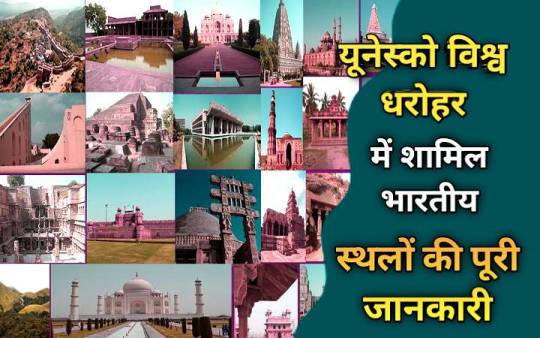
View On WordPress
#How many UNESCO heritage sites are there in India#How many UNESCO sites are there in India#How many world heritage sites are there at present#UNESCO World Heritage List#unesco world heritage sites in india#Which is the first UNESCO World Heritage City of India#Which is the UNESCO World Heritage Site#Which state has the maximum number of UNESCO World Heritage Sites in India#भारत की बात#यूनेस्को की विश्व धरोहर#यूनेस्को में शामिल बायोस्फीयर रिजर्व#यूनेस्को विश्व धरोहर स्थल में शामिल भारतीय विरासत स्थल
0 notes
Text
9 notes
·
View notes
Photo

Mosaic remains from the archaeological site of Volubilis, on the outskirts of Meknes, Morocco. The archaeological site was founded in the 3rd century BC and was included in the UNESCO World Heritage List in 1997
8 notes
·
View notes
Note
Travel ask: 2, 5, 21
2. Best place you traveled to in your country?
Arches National Park was pretty terrific. Also the inside of any Broadway theater.
5. Coolest country you have ever visited?
Iceland!
21. How many “Wonders of the World” have you seen/visited?
Based on this compilation of lists...I've been over the Golden Gate and Brooklyn Bridges, the Old City of Jerusalem, the Grand Canyon, the Roman Colosseum, and Ha Long Bay. According to the Eighth Wonder of the World list, I've also been to Niagara Falls, Angkor Wat, the Statue of Liberty, and Stonehenge. So 10, depending on how you count? But none of the ancient wonders, if that's what this question is about.
#ryeloza#ask meme#ask me ask me ask me#travel#dang i used to post a lot more personal photos and original posts eh?#i will add that angkor wat is incredible but ta prohm was far and away the coolest thing i saw that day#other rice terraces were on those lists but the only ones i've seen were in northern vietnam and they were damn cool too#i decided not to count unesco world heritage sites for the purpose of this ask because there are 900 of them
1 note
·
View note
Text

Angkor Wat - Built in 12th century during the powerful Khmer Empire, listed as one of UNESCO world heritage sites in 1992 and it’s the well-known, the largest monument in the world.x
#Angkor Wat - Built in 12th century during the powerful Khmer Empire#listed as one of UNESCO world heritage sites in 1992 and it’s the well-known#the largest monument in the world.#angkorwat#siemreap#heritage#architecture#monument#cambodia#southeastasia#destination#travel
2 notes
·
View notes
Text


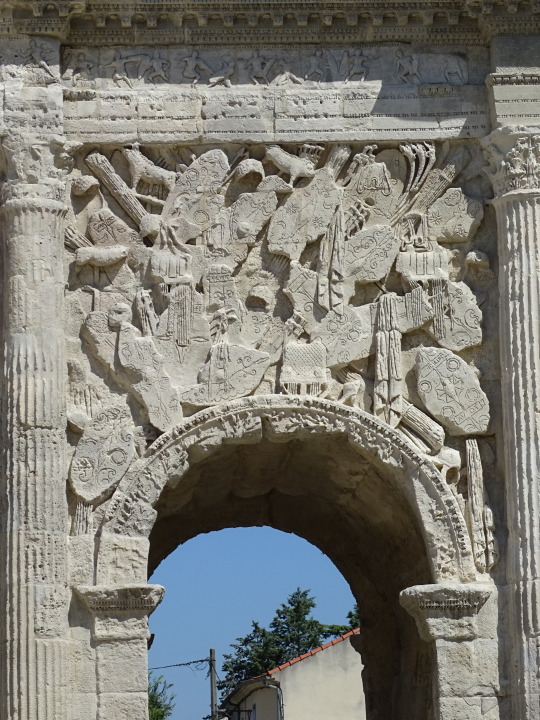
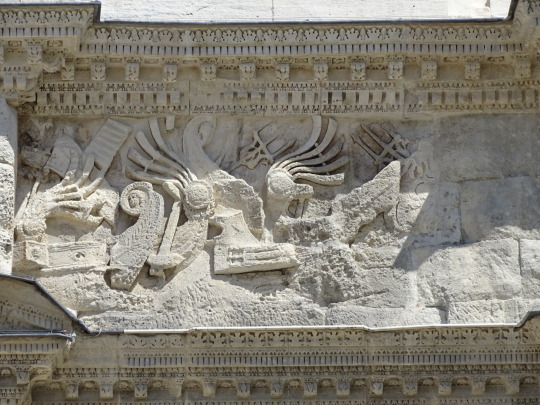


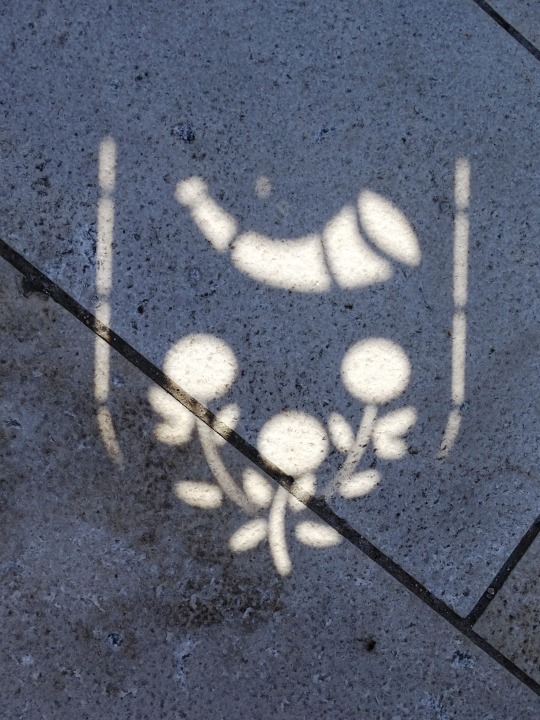
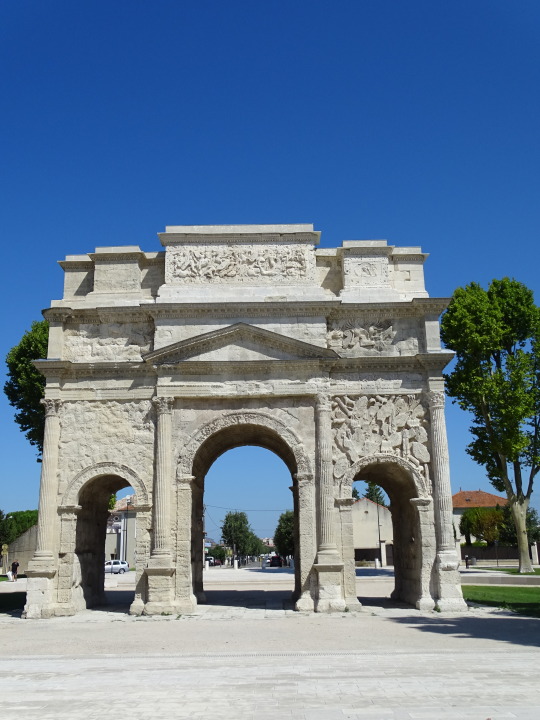

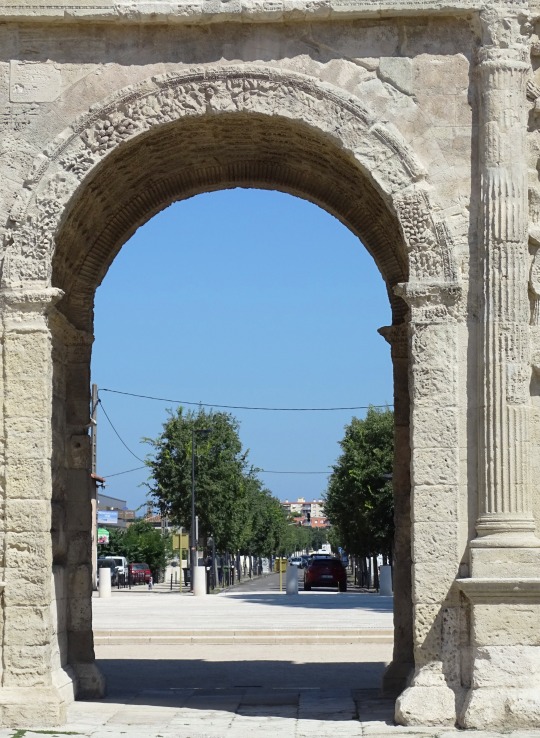
Triumphal Arch of Orange, France (No. 1)
Orange is a commune in the Vaucluse department in the Provence-Alpes-Côte d'Azur region in Southeastern France. It is about 21 km (13 mi) north of Avignon, on the departmental border with Gard, which follows the Rhône and also constitutes the regional border with Occitania. Orange is the second-most populated city in Vaucluse, after Avignon. In 2019, it had a population of 28,772.
The settlement is attested as Arausio and Arausion in the first and second centuries AD, then as civitas Arausione in the fourth century, civitas Arausicae in 517 (via a Germanized form *Arausinga), Aurengia civitatis in 1136, and as Orenga in 1205.
The name Arausio can be explained as the Gaulish ar-aus(i)o- ('temple, cheek'), itself derived from an earlier Proto-Celtic *far-aws(y)o-, which literally means 'in front of the ear'. It is cognate with the name of other ancient settlements, including Arausa, Arausia, Arausona (Dalmatia) and the nearby Oraison (Alpes-de-Haute-Provence).
Roman Orange was founded in 35 BC by veterans of the second legion as Arausio (after the local Celtic water god), or Colonia Julia Firma Secundanorum Arausio in full, "the Julian colony of Arausio established by the soldiers of the second legion." The name was originally unrelated to that of the orange fruit, but was later conflated with it.
Source: Wikipedia
#Orange#Provence-Alpes-Côte d'Azur#Vaucluse#Carpentras#travel#original photography#vacation#tourist attraction#landmark#cityscape#architecture#summer 2021#France#Europe#Triumphal Arch of Orange#Arc de triomphe d'Orange#UNESCO World Heritage List#French history#Roman history#seal
7 notes
·
View notes
Text
Step into history and culture with these top 15 UNESCO World Heritage Sites that offer breathtaking architecture and stories from around the world. From ancient ruins to iconic landmarks, these destinations are must-visits for travel enthusiasts. Discover the full list now!
#unesco heritage sites#world heritage travel#must-visit destinations#cultural travel#historic landmarks#iconic travel spots#travel bucket list
0 notes
Text
MONASTERO DI SANT'ILARIONE, A GAZA, ISCRITTO NEL PATRIMONIO MONDIALE UNESCO
0 notes
Text
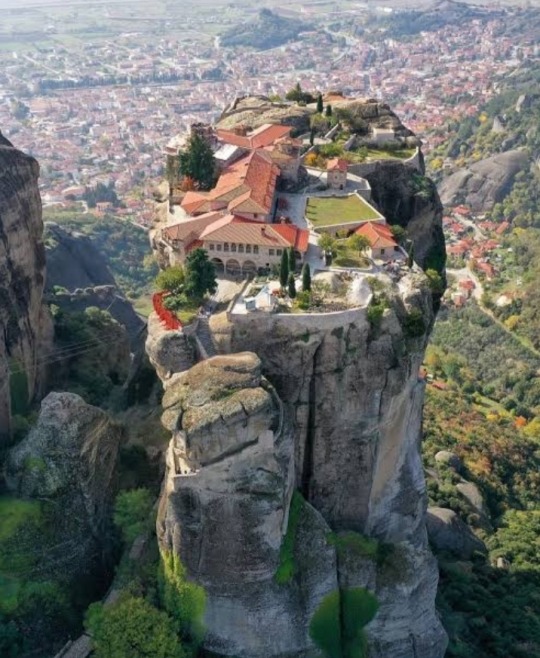
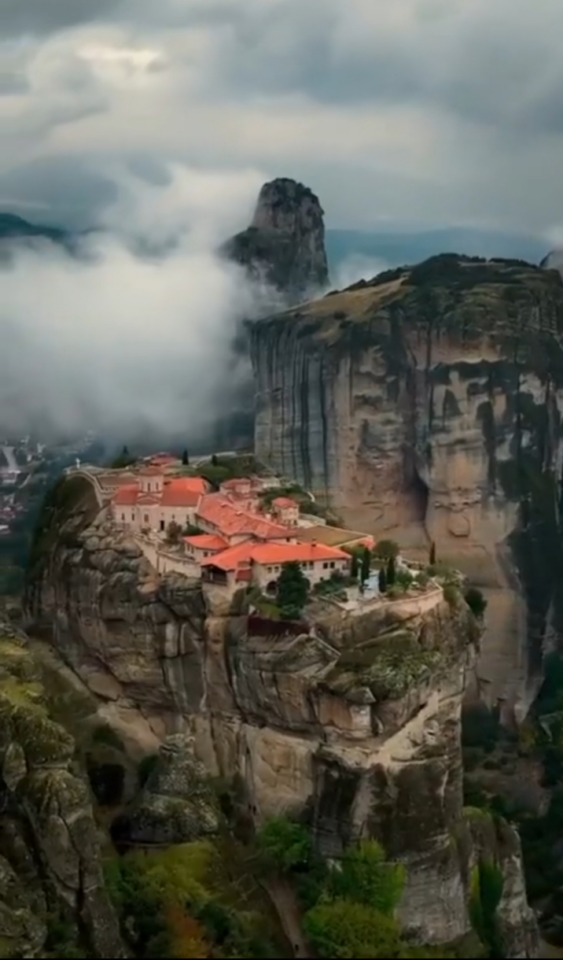

Meteora is an exquisite complex that consists of huge dark stone pillars rising outside Trikala, near the mountains of Pindos.
Monasteries that sit on top of these rocks make up the second most important monastic community in Greece, after Mount Athos in Halkidiki.
Out of the thirty monasteries that were founded throughout the centuries, only six of them are active today.
History of Meteora goes many millenniums back. In Greek, the name Meteora aptly translates to “suspended in air.”
Theories upon the creation of this natural phenomenon are associated with the geological movements that have occurred several geological periods ago.
Scientists believe that these pillars were formatted about 60 million years ago, during the Tertiary Period.
That time, the area was covered by sea but a series of earth movements caused the seabed to withdraw.
The mountains left were continuously hit by strong winds and waves, which, in combination with extreme weather conditions, affected their shape.
This is why the pillars are composed of sandstone and conglomerate.
In Byzantine times, monks had the inspiration to construct monasteries on top of these rocks so that they would be closer to god.
The foundation of Meteora monasteries began around the 11th century CE.
In the 12th century CE, the first ascetic state was officially formed and established a church to the Mother of God as their worshiping center.
Activities on this church were not only related to worshiping God, but hermits used these occasions to discuss their problems and exchange ideas relating to their ascetic life there.
In the 14th century CE, Saint Athanasios established the Holy Monastery of the Transfiguration of Jesus and named this huge rock Meteoro, which means ''hanged from nowhere.''
This monastery is also known as the Holy Monastery of the Great Meteoron, the largest of all monasteries.
For many centuries, the monks used scaffolds for climbing the rocks and getting supplies.
As years passed, this method was followed by the use of nets with hooks and rope ladders. Sometimes a basket was used, which was pulled up by the monks.
Wooden ladders of 40 meters long were also one of the essential tools for accessing the monasteries.
Between the 15th-17th century CE, Meteora was at its prime with the arrival of many monks from other monasteries or people who wanted to lead an ascetic life in this divine environment.
However, the prosperity of Meteora during that time started to fade away after the 17th century CE, mainly due to the raids of thieves and conquerors.
These caused many monasteries to be abandoned or destructed.
Today, only 6 monasteries operate with a handful of monks each. The only nunnery (female monastery) is the Monastery of Agios Stefanos.
Meteora was added to the UNESCO World Heritage List in 1988 because of the outstanding architecture and beauty of the complex, in addition to its religious and artistic significance.
📷: credit to the owner (photo 1) / Christos Kapoulas (photos 2 and 3)
© Greeka
#Meteora#Trikala#Pindos#Greece#monasteries#pillars#Tertiary Period#church#Saint Athanasios#Holy Monastery of the Transfiguration of Jesus#Holy Monastery of the Great Meteoron#monks#nunnery#Monastery of Agios Stefanos#rock formation#UNESCO World Heritage List#architecture#Thessaly#nuns
5 notes
·
View notes
Text
A Journey Through Time: Exploring Historical Wonders with Two Free Plane Tickets

View On WordPress
#Adventure#Culture#dailyprompt#dailyprompt-2011#Historical Sites#History#Travel#Travel Bucket List#UNESCO World Heritage
0 notes
Text
Kazbegi, Gudauri, Zhinvali Tour Georgia

View On WordPress
#12th Century Church of the Cross#13th Century Feudal Dynasty Eristavis of Aragvi#Abkhazia Region#Ananuri Fortress and Church#Ananuri Tentative List UNESCO World Heritage Program#Aragvi River#Aragvi Valley#Bagrationi Dynasty#Bearded Vulture#Brown Bear#Capital of North Ossetia Vladikavkaz#Catherine II Great of Russia#Caucasian Black Grouse#Caucasian Snowcock#Chamois#Church of the Assumption Ananuri#Church of the Mother of God Ananuri#Church of the Virgin Ananuri#Cross of Saint Nino#Cross Pass#Dariali Gorge#Dariali Way#Daryali Gorge#Duke Bardzem#Dukes of Aragvi#East Caucasian Tur#Erekle II East Georgian Kingdom of Kartli-Kakheti#Friendship Monument of Georgians and Russians#Georgian Military Highway#Georgian President Salome Zourabichvili
0 notes